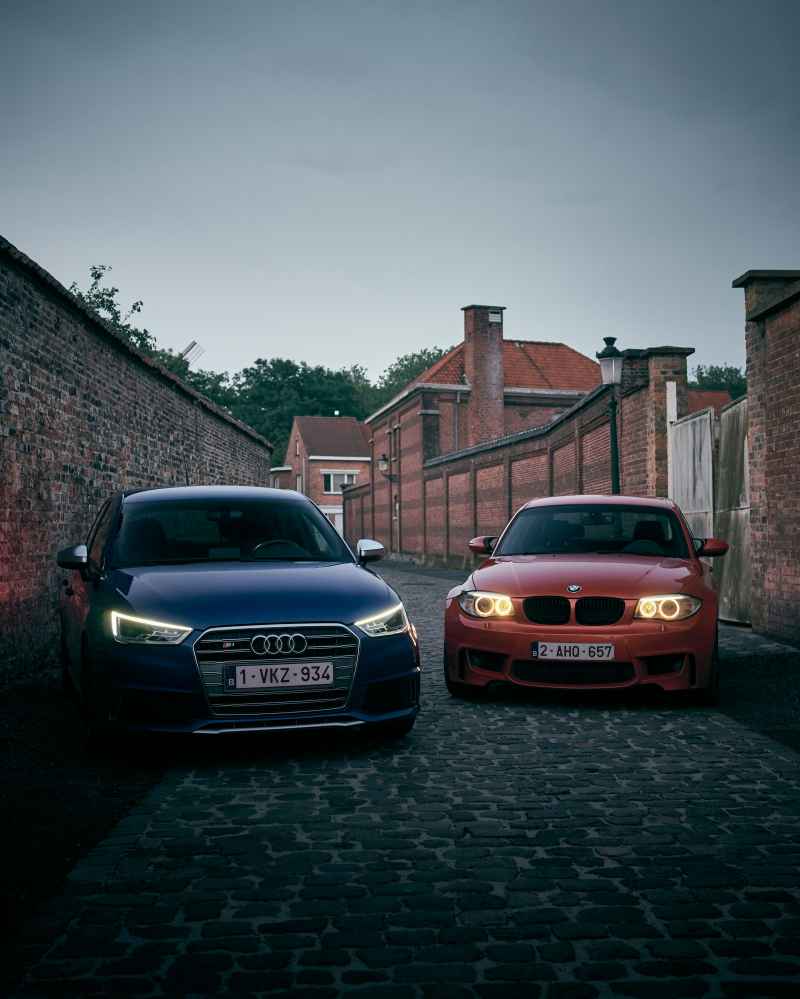In 2025, the rivalry between Audi and BMW continues to heat up as both German luxury automakers introduce refreshed lineups featuring cutting-edge technology and enhanced performance. The battle spans multiple segments, from compact sedans to SUVs and electric vehicles, giving buyers a variety of compelling options depending on their priorities.
In the compact sedan category, the Audi A3 arrives with a refreshed exterior and an upgraded virtual cockpit, starting around $35,000. It is powered by a 1.5-liter TFSI engine producing 150 horsepower, enhanced by mild-hybrid technology for better fuel efficiency. Audi’s signature minimalist interior design features premium materials that appeal to buyers seeking refinement and value. BMW counters with its 2025 1 Series, which starts slightly higher at approximately $36,500. The base 118i model uses a 1.5-liter turbocharged three-cylinder engine delivering 136 horsepower and boasts the latest iDrive 8.5 infotainment system with a distinctive curved display, emphasizing a high-tech cabin experience. While the BMW may be less powerful in its base form, it remains popular among driving enthusiasts for its agile handling. Thus, the Audi A3 tends to attract those prioritizing value and luxury, whereas the BMW 1 Series appeals to buyers focused on sportier dynamics.
Moving to the midsize luxury segment, the Audi A4 receives subtle styling updates for 2025 and improved driver assistance features. Its base 40 TFSI variant is equipped with a 2.0-liter turbocharged four-cylinder producing 204 horsepower, paired with a smooth 7-speed S tronic transmission. The cabin upgrades include the latest MMI touch response system and refined materials, offering a tech-forward yet understated environment. Meanwhile, BMW’s 3 Series brings more significant visual tweaks and additional standard equipment in 2025. The entry-level 330i features a 2.0-liter turbo engine generating 255 horsepower, coupled with an 8-speed automatic transmission that delivers excellent performance. Known for its sharp steering and composed handling, the 3 Series continues to dominate in driving dynamics, although Audi’s A4 provides a sophisticated alternative with an emphasis on technology and refinement.
In the luxury SUV category, Audi’s Q3 boasts a redesigned grille, updated LED lighting, and standard Quattro all-wheel drive across the range. The base 40 TFSI model’s 2.0-liter turbo engine produces 184 horsepower, while interior enhancements focus on ergonomics and connectivity. BMW’s 2025 X1 grows slightly in size, offering increased rear-seat space and a more powerful turbocharged 2.0-liter engine producing 241 horsepower in its sDrive28i variant. The latest Operating System 9 improves voice control and navigation features, enhancing the overall user experience. BMW’s superior power and tech offerings give it an edge in this segment, but Audi’s Q3 remains a stylish and well-rounded choice.
When it comes to performance models, Audi’s 2025 S5 Sportback increases output to 349 horsepower with its 3.0-liter turbocharged V6 and adds a 48-volt mild-hybrid system to improve efficiency. The quattro all-wheel-drive system is further refined for better traction, and sustainable interior materials provide a modern touch. BMW’s M440i xDrive benefits from chassis enhancements that sharpen handling. Its 3.0-liter inline-six engine produces 386 horsepower, paired with an 8-speed automatic transmission. The addition of BMW’s Laserlight technology improves nighttime visibility. In terms of driving engagement and raw power, the BMW M440i stands out as the more thrilling option.
Both brands have also made significant advances in technology for 2025. Audi expands the availability of its augmented reality head-up display, introduces new “Audi Connect” remote services, and upgrades driver assistance systems such as traffic jam assist. BMW counters with a faster iDrive 8.5 system, an expanded Highway Assistant that enables hands-free driving up to 85 mph, and a new Parking Assistant Professional featuring a 3D surround view.
In the electric vehicle arena, Audi’s Q4 e-tron receives an upgraded 82 kWh battery offering up to 300 miles of range and faster charging at 175 kW, allowing 10-80% charge in about 28 minutes. BMW’s iX1 xDrive30 features dual electric motors delivering 313 horsepower and a 64.7 kWh battery with up to 270 miles of range. While the Q4 e-tron leads on driving distance, the iX1 provides better performance and charging management.
In conclusion, Audi is an excellent choice for buyers who prefer sophisticated styling, refined interiors, and standard all-wheel drive, whereas BMW appeals to those seeking engaging driving dynamics, powerful base engines, and cutting-edge infotainment systems. Both brands continue to push the boundaries of luxury and technology in 2025, so the best way to choose is by test driving comparable models to find the perfect fit for your preferences and needs.




